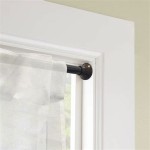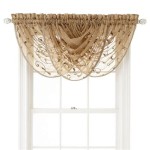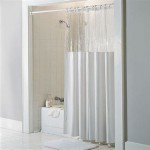Best Blackout Curtains for Heat
Blackout curtains offer more than just light blockage; they can significantly impact a room's temperature, contributing to energy savings and a more comfortable environment. Choosing the right blackout curtains involves considering several factors, from fabric and color to features and budget. This article explores the key features to consider when selecting blackout curtains specifically for heat reduction.
Key Features to Consider for Heat Blocking
Several crucial features determine a blackout curtain's effectiveness in blocking heat:
- Fabric Type: The fabric's density and composition greatly influence its thermal properties. Heavier, tightly woven fabrics tend to provide better insulation.
- Color: Darker colors absorb more heat than lighter colors, which reflect it. While this can be beneficial in winter, lighter-colored blackout curtains are generally preferred for summer heat reduction.
- Lining: A thermal lining adds an extra layer of insulation, further enhancing the curtain's ability to block heat transfer. Look for linings specifically designed for thermal insulation.
- Multiple Layers: Some blackout curtains feature multiple layers of fabric for enhanced light blocking and insulation. This multi-layered construction traps air, further reducing heat transfer.
Benefits of Blackout Curtains for Heat Reduction
Investing in quality blackout curtains designed for thermal insulation provides a range of benefits:
- Reduced Energy Costs: By blocking incoming solar heat, blackout curtains can lessen the strain on air conditioning systems, leading to lower energy bills.
- Consistent Room Temperature: They help maintain a more stable temperature, reducing fluctuations caused by direct sunlight.
- Protection from UV Rays: Blackout curtains can block a significant portion of harmful UV rays, protecting furniture and flooring from fading.
Choosing the Right Blackout Curtains for Your Needs
Selecting the best blackout curtains requires careful evaluation of individual needs and preferences:
- Window Size and Type: Measure your windows accurately to ensure a proper fit. Consider the type of window (e.g., standard, bay, or sliding glass door) when choosing curtain style and hardware.
- Room Aesthetics: Blackout curtains come in a variety of colors, patterns, and textures to complement various décor styles.
- Budget: Prices vary based on fabric, features, and brand. Set a budget beforehand to narrow down your options.
Installation and Maintenance
Correct installation and proper maintenance are crucial for maximizing the effectiveness and lifespan of blackout curtains:
- Proper Hanging: Ensure the curtains are hung correctly to minimize gaps and maximize light and heat blockage. Consider using a curtain rod that extends beyond the window frame.
- Regular Cleaning: Follow the manufacturer's instructions for cleaning to maintain the curtains' appearance and functionality.
Types of Blackout Curtain Fabrics
The fabric plays a critical role in a blackout curtain's ability to block heat. Here are some common options:
- Polyester: A versatile and durable fabric that is often used in blackout curtains due to its ability to block light and heat effectively.
- Cotton Blends: Blends combining cotton with polyester or other synthetic fibers offer a balance of breathability and light blocking capabilities.
- Linen: While linen offers a natural and elegant look, it typically requires a separate lining for effective blackout and thermal insulation.
Understanding Blackout Curtain Ratings
While there isn't a standardized rating system for blackout curtains specifically for heat blocking, understanding general blackout ratings can be helpful:
- Room Darkening: These curtains block some light but not as effectively as true blackout curtains. They may offer some heat reduction but not to the same extent as higher-rated options.
- Blackout: These curtains block the majority of light and provide significant heat reduction. Look for curtains specifically marketed for thermal insulation for optimal heat blocking.
Additional Considerations for Heat Blocking
Beyond the curtain itself, other factors can impact heat reduction:
- Window Treatments: Combining blackout curtains with other window treatments like blinds or shades can further enhance heat blocking.
- Window Film: Applying window film can provide an additional layer of insulation and help reflect heat away from the window.
- Proper Sealing: Ensuring windows are properly sealed can minimize drafts and improve the overall effectiveness of blackout curtains in reducing heat transfer.

The Best Blackout Curtains Reviews By Wirecutter

7 Best Blackout Curtains In 2024

The Best Blackout Curtains To Block Light In 2024

8 Best Blackout Curtains Of 2024 Shades For Light Sleepers

The 8 Best Blackout Curtains Of 2024 Plus Design Tips

The 4 Best Blackout Shades Of 2024 Reviews By Wirecutter

Sun Zero Oslo Theater Grade Black Polyester Solid 52 In W X 108 L Thermal Grommet Blackout Curtain 58695 The Home

The Best Blackout Curtains To Block Light In 2024

Best Blackout Curtains Of 2024 According To Pas And Experts
The Best Blackout Curtains Of 2024








